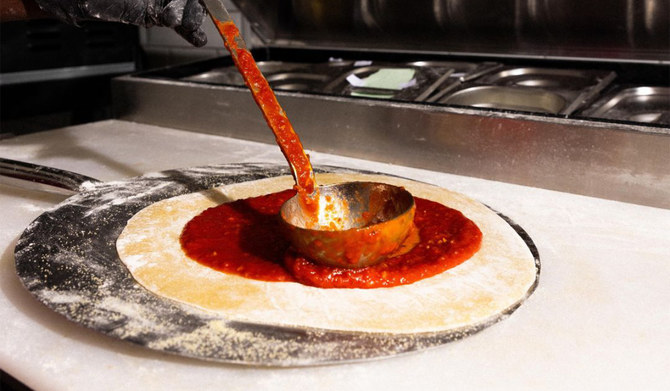Whether you want to use it around the house for all-purpose cleaning and getting rid of pesky stains or as a secret ingredient in baking, vinegar is a versatile item that should be in everyone’s pantry
For the longest time, I despised vinegar for its strong smell and “ruining” my salads. It wasn’t until later in life when I was older and got more adventurous with my tastes that I came to appreciate it, not only in the kitchen but also around the whole house! In fact, you would be surprised to see the genius ways you can use this wonderful liquid, though you may want to opt for white vinegar or at least “lighter” colored ones if you’ll be using it to wipe down surfaces.
Cooking
Let’s start with the most obvious. Adding some vinegar to a salad dressing gives it a bit of acidity, especially if lemons are not quite what you are looking for. Or you could even combine the two and experimenting can’t hurt, that’s for sure.
My favorite place to use vinegar is to marinate meat, be it red or white. Add a couple of tablespoons of vinegar to your marinade and the results will wow you. The acid in the vinegar acts as a tenderizing agent and this is not limited to beef or chicken as it works for seafood as well.
Talking about food and vinegar and not mentioning pickling feels like a crime. Once you learn how to make your own pickles, the ones you buy in stores won’t taste as flavorful anymore.
And finally, vinegar can also be used in baking. Vinegar and baking soda combined make for a great leavening agent. When I wanted to try out red velvet cake and as buttermilk is not really a thing in Turkey, I made a substitute out of vinegar and milk. It gave the cake really a “velvety” texture – quite deserving of its name!

Smell a problem?
Vinegar was offputting for me personally because of its distinctive smell but it is actually the solution for eliminating odors and undesirable smells. I personally resort to its smell-dissipating powers when I am cooking fish. When the fish is fresh, you will not have a strong, lingering smell in the house. But when it is not, things can be more challenging. To get rid of the smell of fish from your hands, just dunk your hands in vinegar for a bit and wash them thoroughly. If the smell is not too strong, you can always rub lemons or lemon juice on your hands too. But when it comes to fish, such heavy smells may prove to be a nuisance. Trust me, I have many times cleaned the kitchen over and over still to have that smell there lingering for days. To aid that, I have found that bringing vinegar to a boil and letting the vapor spread in the kitchen was all I needed. The smell of vinegar will be overpowering for a couple of minutes but it gets much better afterward.
Speaking of kitchens, your trashcan may be the source of bad smells too, despite regular cleanouts. So before it gets bad, mix some vinegar with water and add a few drops of essential oil and spray the insides of the can with it.
And whether it is tea towels or your bath towels, you may realize that they are not as fresh and clean as they used to be. Mildew is the culprit of that. To remedy this, wash your towels with a cup of vinegar and baking soda to make them fluffy and fresher smelling.

Cleaning
I started to allude to its cleaning uses in the smell section but before I used vinegar in my meals it was my best friend in the bathroom. Sick of soap scum? Mix vinegar with a bit of water and watch it come off. Got streaks on mirrors or the showerhead not flowing freely anymore? Again use vinegar. If you don’t feel like DIY-ing, there are also commercial cleaners based on vinegar. Vinegar works like a charm to remove pesky limescale from all those surfaces in the bathroom and the kitchen as well.
While there are many chemical solutions to remove it from, for example, your kettle, I would rather boil some diluted vinegar and wash it out again.
Anyone with pets and carpets at home knows that accidents happen. Sometimes you catch it directly and can avoid the worst of the staining and the smell but sometimes you don’t. I have given up counting how many times my cats have puked on the carpet. First, remove the worst with a cloth or some paper towels and then spray some vinegar over the problem zone. Get a cloth and rub it out. If the first try doesn’t do the job completely, repeat. Some like to use a combination of baking soda and vinegar but it is entirely up to you.
Clogged drains are a pain both in the kitchen and the bathroom and with the very same combination, ie. vinegar and baking soda, you can undo the slow draining of water. Pour down some boiling water afterward to complete the de-clogging.
If you love to paint like me, you will have likely get caught up in the moment and simply forget to clean your brushes after some art therapy. Getting rid of the residual paint without damaging a brush can also be quite annoying. I was surprised that here again vinegar is my savior. You only need to let the brushes soak in vinegar for about an hour and bring it to a simmer. Drain and rinse it. But this only works with brushes that are not plastic.
Second to last in the cleaning section, we have the removal of wax. While I like to use a paper towel and then iron out the wax, this is not always possible. Mix equal parts of vinegar and water and gently wipe it away. If there is some buildup, you can spray that solution first and let it soak in and then remove it, without scraping furniture or floors.
Just as annoying as wax are stickers on various surfaces. Soak those with pure vinegar and leave it on for a bit. Then wipe off and admire your non-sticky surface.
Beauty

My mother used to pour about a liter of water or a small bucketful of water mixed with a cup of vinegar on her hair at the very end of her shower as one last rinse. For the first few moments, it would smell weird but when I touched her hair all I felt was silk. Just a dash of vinegar and you can say goodbye to expensive conditioners.
Nail polish likes to stay longer when your nails are squeaky clean and this is where vinegar helps. Rub your nails with some vinegar on a cotton pad and you can enjoy that manicure a bit longer.
Gardening
Using chemicals in the garden is something everyone should frown upon and we need the bees! Getting rid of weeds in a more eco-friendly way is possible by mixing vinegar with water and a bit of salt. Spray it liberally on the cracks of your walkway or driveway. But be careful not to attack the plant you want to keep alive.
When you have flowers that you want to keep alive for longer, all you need to do is cut off the stem a bit and then put a teaspoon or two of sugar and a small dash of vinegar into the water.
How to make vinegar from scratch

Apple cider vinegar is the one I always go for and it is also high in probiotics. It might not be the strongest of them all but it is definitely clear in color and the taste is delicious.
Using leftovers such as apple peels work great but you might want to use some apples that are ripe as well. First, wash the peels or chunks of apples and prepare a big sterile jar. Fill the jar until it is about one-third full. As a starter, you can add a few chickpeas or about 50 milliliters of apple cider vinegar (about 6 tablespoons) to aid its fermentation. They will help create a “mother of vinegar” or a SCOBY (symbiotic community of bacteria and yeasts) that you can use to create more.
To prevent this mix from turning into alcohol, you’ll need to add a tablespoon of sea salt but not regular table salt containing iodine. You should fill the rest of the container with non-chlorinated drinking water. After that, close the jar with a clean cloth and either use some string or a rubber band to keep it in place. Now you just need to be patient and stir this apple mix every day. Set a reminder or write it down but it is essential that you do this every day. In warm climates especially, this will prevent it from becoming moldy.
As time passes, the apple peels will start to sink to the bottom and once all the peels have sunk you will stop stirring and let it rest for a minimum of 40 days. Many say two months but 40 days work just fine from my experience. After that, you need to strain the vinegar, which you can do with a sieve lined with a cloth (a cheesecloth or muslin cloth will do). Pour the liquid into the containers of your choice so you can use it wherever you like.








